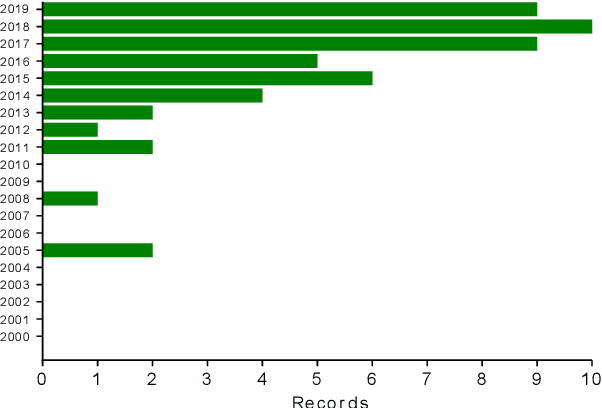Craig Ritchie
A method for quantifying sectoral optic disc pallor in fundus photographs and its association with peripapillary RNFL thickness
Nov 13, 2023



Abstract:Purpose: To develop an automatic method of quantifying optic disc pallor in fundus photographs and determine associations with peripapillary retinal nerve fibre layer (pRNFL) thickness. Methods: We used deep learning to segment the optic disc, fovea, and vessels in fundus photographs, and measured pallor. We assessed the relationship between pallor and pRNFL thickness derived from optical coherence tomography scans in 118 participants. Separately, we used images diagnosed by clinical inspection as pale (N=45) and assessed how measurements compared to healthy controls (N=46). We also developed automatic rejection thresholds, and tested the software for robustness to camera type, image format, and resolution. Results: We developed software that automatically quantified disc pallor across several zones in fundus photographs. Pallor was associated with pRNFL thickness globally (\b{eta} = -9.81 (SE = 3.16), p < 0.05), in the temporal inferior zone (\b{eta} = -29.78 (SE = 8.32), p < 0.01), with the nasal/temporal ratio (\b{eta} = 0.88 (SE = 0.34), p < 0.05), and in the whole disc (\b{eta} = -8.22 (SE = 2.92), p < 0.05). Furthermore, pallor was significantly higher in the patient group. Lastly, we demonstrate the analysis to be robust to camera type, image format, and resolution. Conclusions: We developed software that automatically locates and quantifies disc pallor in fundus photographs and found associations between pallor measurements and pRNFL thickness. Translational relevance: We think our method will be useful for the identification, monitoring and progression of diseases characterized by disc pallor/optic atrophy, including glaucoma, compression, and potentially in neurodegenerative disorders.
Artificial Intelligence, speech and language processing approaches to monitoring Alzheimer's Disease: a systematic review
Oct 12, 2020



Abstract:Language is a valuable source of clinical information in Alzheimer's Disease, as it declines concurrently with neurodegeneration. Consequently, speech and language data have been extensively studied in connection with its diagnosis. This paper summarises current findings on the use of artificial intelligence, speech and language processing to predict cognitive decline in the context of Alzheimer's Disease, detailing current research procedures, highlighting their limitations and suggesting strategies to address them. We conducted a systematic review of original research between 2000 and 2019, registered in PROSPERO (reference CRD42018116606). An interdisciplinary search covered six databases on engineering (ACM and IEEE), psychology (PsycINFO), medicine (PubMed and Embase) and Web of Science. Bibliographies of relevant papers were screened until December 2019. From 3,654 search results 51 articles were selected against the eligibility criteria. Four tables summarise their findings: study details (aim, population, interventions, comparisons, methods and outcomes), data details (size, type, modalities, annotation, balance, availability and language of study), methodology (pre-processing, feature generation, machine learning, evaluation and results) and clinical applicability (research implications, clinical potential, risk of bias and strengths/limitations). While promising results are reported across nearly all 51 studies, very few have been implemented in clinical research or practice. We concluded that the main limitations of the field are poor standardisation, limited comparability of results, and a degree of disconnect between study aims and clinical applications. Attempts to close these gaps should support translation of future research into clinical practice.
 Add to Chrome
Add to Chrome Add to Firefox
Add to Firefox Add to Edge
Add to Edge